Bears love everything about agriculture — the livestock, deadstock, standing crops, binned grain, silage, honey, orchards, gardens, and anything else agriculture provides. Two decades ago it was a novelty to see a grizzly wander across an Alberta pasture. Not any more, says Jeff Bectell, who ranches south of Cardston, Alta., near the U.S. border, and […] Read more

We’ve got grizzlies! …and it takes a community to keep them at bay
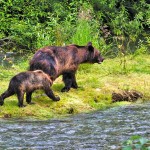
Getting a grip on grizzly bear populations
You can’t manage what you don’t measure is as true for wildlife as it is for agriculture, but counting grizzly bears is a bit tricky. Andrea Morehouse with Alberta Environment at Pincher Creek is heading up a unique grizzly monitoring project in the southwest that collects hair samples from natural grizzly rub objects in Alberta’s […] Read more
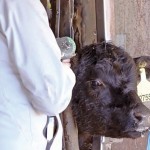
Straight talk on cattle steroids
Canada’s Beef Cattle Research Council (BCRC) has collected some interesting stats on the estrogen level in beef. A 75-gram serving of beef from cattle treated with hormone implants contains two nanograms (ng ~ one billionth of a gram) of estrogen. “A person would need to eat 3,000,000 hamburgers made with beef from implanted cattle to […] Read more
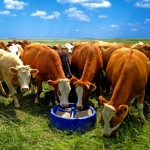
Trace minerals of pasture forages in Saskatchewan
The Saskatchewan Forage Council (SFC) recently completed a broad evaluation of trace mineral content of pasture forages across Saskatchewan with a view to learning whether mineral programs for cattle on pasture should differ according to season, soil type and/or forage type. The findings indicate just that. “Season and forage species had significant effects on trace […] Read more
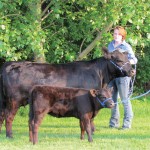
Lowline cattle on a mission
These little cattle are for beef, not for show
Go ahead. Ask Lowline breeders what their small-size cattle are good for. They won’t be offended. When we asked, the breeders put docility and feed efficiency at the top of their list of useful characteristics. Many sell beef directly to consumers and say there’s no better testimony to quality and taste than repeat customers. The […] Read more
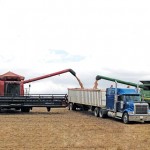
Cattle operation makes the most of every opportunity
That’s how the Betcker family has expanded T Bar Cattle Co. in the past decade
What a difference a decade has made for Brad and Lisa Betcker and family, Tanner and Morgan, who operate T Bar Cattle Co. just south of Medicine Hat, Alta. They’ve expanded from a cow-calf ranch near Elkwater, secure with steady income from Brad’s job with the county there, into the risky realm of cattle feeding […] Read more

Case of vitamin deficiency in calves cracked
High mortality isn’t normally associated with vitamin deficiencies, but for one Alberta producer, stressful winter weather may have been the tipping point. The family lost 22 of the 70 calves born to heifers during the 2013 calving season. Getting the Viking Veterinary Clinic involved from the outset, when unexplained deaths started happening early in the […] Read more

Talk, tweet and shout about antibiotics for food animals
We've sat back long enough
We’ve sat back long enough
Sickness happens. When animals get sick they need treatment every bit as much as people. Retaining access to effective antibiotics for food animals is important for animal welfare and food safety because raising healthy animals means healthful, safe food. This is an important message consumers need to hear from producers in the discussion on antibiotic […] Read more
Don’t gamble on feed quality
Test so you’ll be prepared for whatever Mother Nature throws your way, says forage specialist Terry Kowalchuk
In a survey of Saskatchewan forage last fall 62 per cent of the 200 bales sampled did not meet the energy requirement for a 1,350-pound cow in mid-gestation at -25 C. Only five per cent of the alfalfa, alfalfa-grass, grass and cereal greenfeed bales supplied enough energy to carry pregnant cows through the last month […] Read more
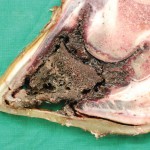
Toe-tip necrosis in cattle still something of a mystery
Early detection critical to treatment
Having no clue as to what’s causing lameness could be your best clue for diagnosing toe-tip necrosis syndrome in the early stages, which is the only time treatment will be effective. Circumstantial evidence is the key, explains Dr. Murray Jelinski, Alberta Beef chair with the Western College of Veterinary Medicine at the University of Saskatchewan. […] Read more



